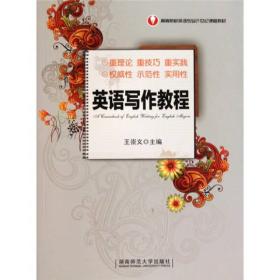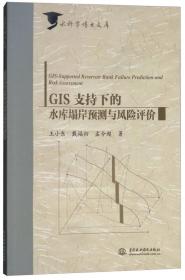
英语写作教程
¥ 20.37 5.4折 ¥ 38 全新
仅1件
山东泰安
认证卖家担保交易快速发货售后保障
作者王崇义 主编
出版社湖南师范大学出版社
出版时间2010
版次1
装帧平装
货号R2库 10-16
上书时间2024-10-18
- 在售商品 暂无
- 平均发货时间 24小时
- 好评率 暂无
- 最新上架
商品详情
- 品相描述:全新
图书标准信息
- 作者 王崇义 主编
- 出版社 湖南师范大学出版社
- 出版时间 2010
- 版次 1
- ISBN 9787564802523
- 定价 38.00元
- 装帧 平装
- 开本 23cm
- 页数 324页
- 正文语种 简体中文
- 【内容简介】
- 本书阐述了从句子到段落和文章以及各类特殊用途写作,包括各类书信、便条、图表信息转换、概要等的写作理论与技巧。
- 【目录】
-
Chapter One Mechanics1.1 General Remarks1.2 Margins,Paragraphing,and Handwriting1.2.1 Margins1.2.2 Paragraphing1.2.3 Handwriting1.3 Syllabification/Syllable Structure1.4 Abbreviatioand Numerals1.4.1 Abbreviations1.4.2 Numerals1.5 CapitalizationExercisesChapter Two PunctuatioMarks2.1 General Remarks2.2 Line-beginning PunctuatioMarks2.3 Sentence-ending PunctuatioMarks2.3.1 The Period / The Full Stop2.3.2 The QuestioMark2.3.3 The ExclamatioPoint2.4 Internal PunctuatioMarks2.4.1 The Comma2.4.2 The Semicolon2.4.3 The Colon2.4.4 QuotatioMarks2.4.5 The Dash2.4.6 Parentheses2.4.7 Brackets2.4.8 The Apostrophe2.4.9 The Hyphen2.4.10 The Virgule / Slant2.4.11 Italics / Underlining2.5 Some Points about the Use of PunctuatioMarksExercisesChapter Three Diction3.1 General Remarks3.2 Appropriateness and Sense of Style3.2.1 Sense of Style3.2.2 Degree of Word Formality3.3 Exactness and Use of Synonymous Words and Expressions3.4 Specificity, Concreteness, and Conciseness3.5 Imagery / Figures of Speech3.5.1 Metaphor and Simile3.5.2 Personification3.5.3 Hyperbole3.5.4 EuphemismExercisesChapter Four Sentence Writing4.1 General Remarks4.1.1 Sentence Sense4.1.2 The Requirements of aEffective Sentence4.1.3 Sentence Elements4.1.4 Sentence Patterns4.2 Parts of Speech and Their Respective Functions and Positions ia Sentence4.2.1 Nouns4.2.2 Pronouns4.2.3 Adjectives4.2.4 Adverbs4.2.5 Prepositions4.2.6 Conjunctions4.3 Phrases, Clauses, and Sentence Fragments4.3.1 Phrases4.3.2 Clauses4.3.3 Recognizing and Avoiding Sentence Fragments4.4 Classificatioof Sentences4.4.1 Declarative, Interrogative, Imperative, and Exclamatory Sentences4.4.2 Simple, Complex, Compound, and Compound-complex Sentences4.4.3 Loose, Periodic, Mixed, and Balanced Sentences4.4.4 Long and Short Sentences4.4.5 Recognizing and Avoiding Comma splices and Fused Sentences4.5 Ways of Achieving Sentence Variety4.5.1 Achieving Sentence Variety via Combination4.5.2 Achieving Sentence Variety via Coordination4.5.3 Achieving Sentence variety by Using Parallel Structure4.5.4 Achieving Sentence Variety via Subordination4.5.5 Achieving Sentence Variety by Using Modifying Phrases4.5.6 Achieving Sentence Variety by Using Appositives4.5.7 Achieving Sentence Variety by Applying Inversion4.5.8 Achieving Sentence Variety by Employing Emphatic Sentence Structures4.5.9 Achieving Sentence Variety by Using Inanimate SubjectsExercisesChapter Five Paragraph Writing5.1 General Remarks5.2 Types of Paragraphs5.2.1 The Topical Paragraph5.2.2 The Introductory Paragraph5.2.3 The Transitional Paragraph5.2.4 The ConclusioParagraph5.3 The Basic Structure and Qualities of a Topical Paragraph5.3.1 The Unity of a Topical Paragraph5.3.2 The Topic Sentence(TS) of a Topical Paragraph5.3.3 The Supporting Sentences(SS) ia Topical Paragraph5.3.4 The Concluding Sentence(CS) ia Topical Paragraph5.3.5 The Coherence of a Topical Paragraph5.3.6 The Order of a Topical Paragraph5.3.7 The Continuity of a Topical Paragraph5.3.8 The Completeness of a Topical Paragraph5.4 Steps Usually TakeiWriting a Topical Paragraph5.5 Evaluatioof a Topical ParagraphExercisesChapter Six Essay Writing6.1 General Remarks6.2 The Basic Structure of aEssay6.2.1 The Introductioof aEssay6.2.2 The Body of aEssay6.2.3 The Conclusioof aEssay6.3 Types of Essays6.3.1 Narrative Essays6.3.2 Descriptive Essays6.3.3 Expositive Essays6.3.4 Argumentative Essays6.4 The Process of Writing aEssay and Evaluatioof aEssay6.4.1 The Process of Writing aEssay6.4.2 Evaluatioof aEssay6.5 Sample Essays and DiscussionsExercisesChapter Seve Letter Writing7.1 General Remarks7.2 Addressing aEnvelope7.3 The Format/Lay-out of a Letter7.3.1 The Heading7.3.2 The Date7.3.3 The Salutation7.3.4 The Body7.3.5 The Complimentary Close7.3.6 The Signature7.4 Personal Letter Writing7.4.1 Family Letter Writing7.4.2 Friendly Letter Writing7.5 Social Letter WritingExercisesChapter Eight Note Writing8.1 General Remarks8.2 The Content of a Note8.3 The Language of a Note8.4 The Format of a Note8.5 Guidelines for Writing Effective NotesExercisesChapter Nine Business Writing9.1 General Remarks9.2 The Format of a Business Letter9.2.1 The Heading and the Date9.2.2 The Inside Address9.2.3 The Salutation9.2.4 The Body9.2.5 The Complimentary Close9.2.6 The Signature9.3 ApplicatioLetter and Resume Writing9.3.1 A Request Letter for aApplicatioForm9.3.2 A Sample Letter of Application9.3.3 General Remarks about Resume Writing9.3.4 Sample Resume9.4 Sample Business Letters for Various Purposes9.5 Evaluatioof a Business LetterExercisesChapter Te Miscellaneous Practical Writing10.1 General Remarks about Diagrammatic InformatioTransferring10.2 The Content and Some Useful Expressions Used iDiagrammatic Description10.3 Steps Usually TakeiDiagrammatic Descriptioand Sample Articles10.3.1 Steps Usually TakeiDiagrammatic Description10.3.2 Sample Articles of Diagrammatic Description10.4 Summary Writing10.4.1 General Remarks about Summary Writing10.4.2 Summary Writing Process101 5 E- WritingExercisesAppendix Ⅰ CorrectioSymbolsAppendix Ⅱ The Fifty States of U.S.A.and Their AbbreviationsAppendix Ⅲ Writing TermsAppendix Ⅳ Useful Expressions and Idioms and ProverbsAppendix Ⅴ Key to ExercisesBibliography
作者介绍
序言
点击展开
点击收起
— 没有更多了 —












以下为对购买帮助不大的评价